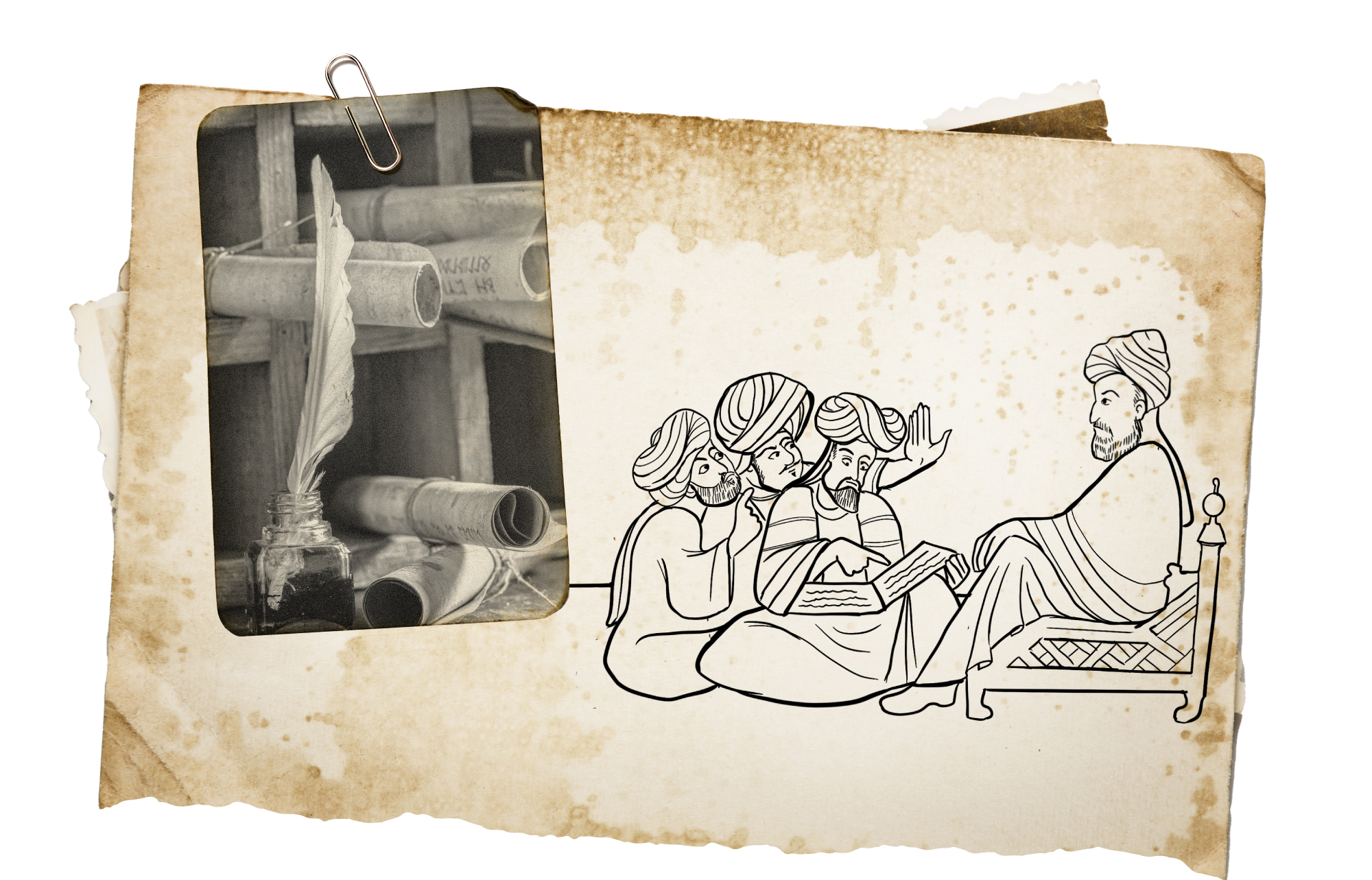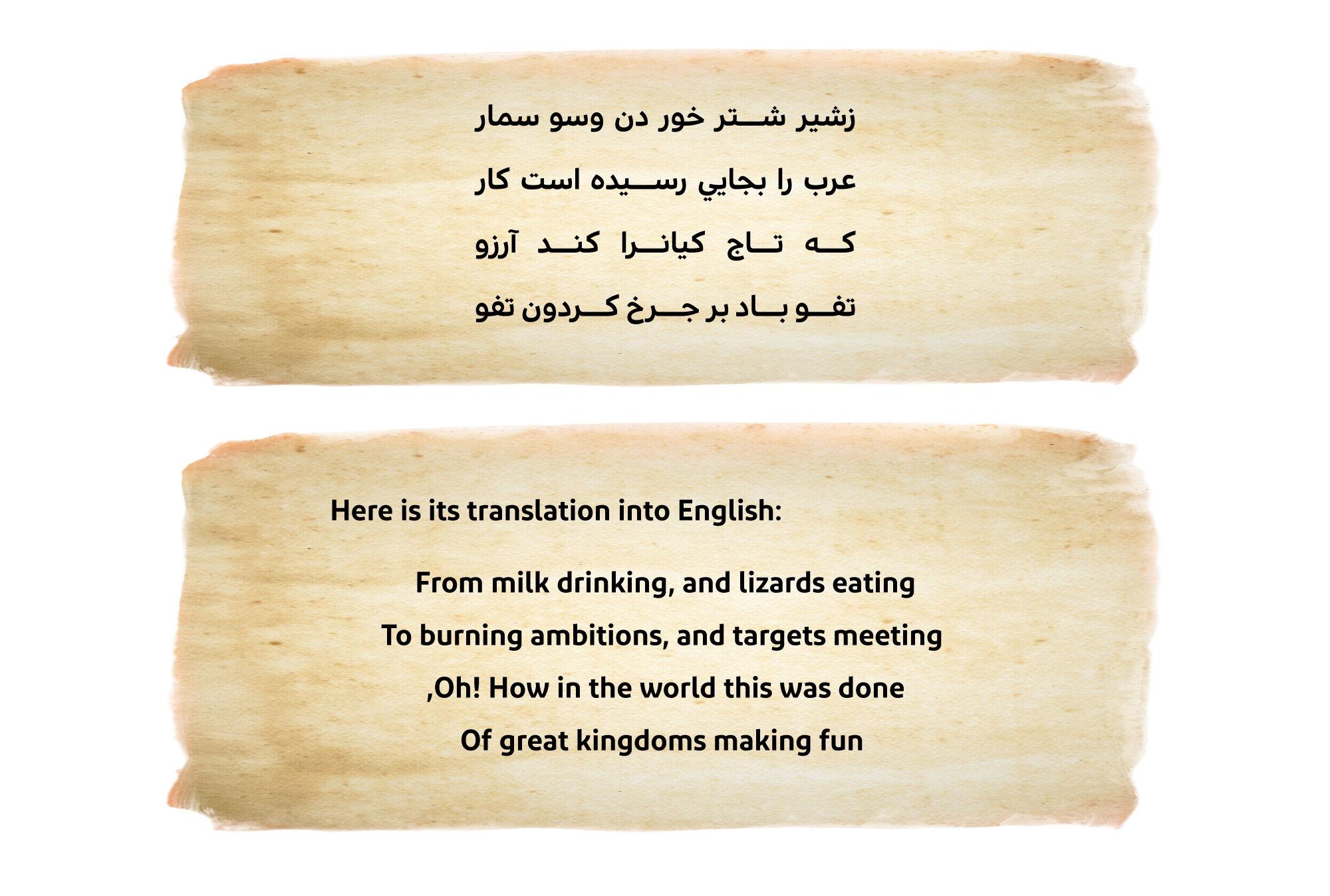
Although their language is 80% based on Arabic
The Persians portray the Arabs badly in their literature
The Persians were destined to be the Arabs’ eastern neighbors, and that was a tense relationship full of doubt on the part of the Arabs who doubted the sincerity of the intentions of the Persians, who had always wanted to attack the Arabs and take over their countries. This is what was achieved before Islam in Iraq and Yemen. Researchers wonder about the Persians’ view of the world with Arab eyes, while it is better for them to see it with eastern eyes, where their ethnic space is located in Afghanistan, India, Uzbekistan and Georgia, especially since the Persians are closer to those races than the Arabs, yet their ambitions are limited to Iraq, the Arabian Gulf and the entire Arab land.
During two interviews with the Iranian newspaper “Sobh Azadi”, the Iranian professor at Tehran University, Sadiq Ziba, said about the Persian Iranians’ view of the Arabs: “We hate the Arabs. Because of them, we curse the Sunnis. We do not forget what they did in the battle of Al-Qadisiyyah”. Referring to the historical reasons for their hatred of the Arabs, Sadiq says: “It seems that we as Iranians have not yet forgotten our historical defeat against the Arabs, and we have not forgotten the Battle of Al-Qadisiyyah after 1400 years. We hide deep hatred towards the Arabs as if it was a fire under the ashes that turns into flames whenever it gets the chance”.
The Iranians treat the Arabs arrogantly, showing their contempt for their customs and way of life, but in fact 80% of the Persian language is of Arab origin. Islam spread in Persia until it dominated Zoroastrianism despite their attempts to keep its ethnic rituals.
The defeat of the Persians in the Battle of Al-Qadisiyyah in 15 AH (636 AD) was a great event in history. The Persians were not only defeated in a battle, but their authority and state collapsed, their identity dissolved, their quarters demolished, and their king was killed. Hence, it was not only a military battle, but a power of a new civilization coming from the depth of the desert, full of human literature spread by Islam, which erased the heresies of Persia. Perhaps what exposed the inherited hatred that many Persians have towards the Arabs is their literature which they adore. They publish poems in their books to pass on to their generations.
Only a few years after the victory of Al-Qadisiyyah, Arab culture, its arts and literature prevailed over Persian thought until the era of the Samanid state (346-450 AH), when the first populist writings were launched that began with the famous “Shahnameh” epic, which represents the main pillar of Iranian culture and its Persian nationalism. These verses are a model of humiliation and hostile poems against the Arabs that Al-Ferdowsi wrote down in his epic:

One of those interested in Iranian studies at Umayya Center for Research and Strategic Studies reveals the thorny relationship and its consolidation in the Persian-Iranian mentality, which is clearly spread in school curricula declaring hostility towards the Arabs, saying: “The tracker of the history of Arab-Persian relations confirms a clear fact, which is that these relations were characterized by the spirit of Persian hostility to the Arabs, expansionism at the expense of their lands and countries, and a strong desire that reaches the point of obsession to control them”.
This is evident in the approach of writers in the ancient Persian heritage. The Shahnameh (the famous epic of Al-Ferdowsi) ends with the advent of the Muslim Arabs and the destruction and occupation of the Sassanid state. The Arabs have been portrayed as less civilized than the Persians. Rustam, the commander of the Persian army, sent a message to Saad Ibn Abi Waqqas (the commander of the Arab army) in which he said: “You came with barefoot soldiers, and you did not bring equipment, supplies, or an elephant with you. Because of your drinking of camel’s milk and eating wild beasts, you reached the point of wishing to take the rule of the Persian kings, the owners of crowns. Come to service the king in order to see his wealth and his kingdom. If he smiles, he will endow what is equivalent to everything that all the Arabs own, and this is considered nothing of what he has”.
On this basis, Al-Ferdowsi wrote his epic, which is devoid of any poetic aspect, and called it the Shahnameh (King of Books), making most of it dedicated to insulting the Arabs and glorifying the Persians and their kings. Persian racists taught their children these hostile poems.
In her book “The Image of the Arabs in Modern Persian Literature”, the researcher Joya Blondel believes that Iranian literature has always portrayed the Arabs badly. She chose models to prove this through five Iranian writers: Muhammad Ali Jamalzadeh, a prose and articles writer, Sadiq Hedayat, one of the most famous writers of Iran in the twentieth century, the novelist Sadiq Gupak, and the poets Mehdi Akhavan Sales and Nader Naderpour. On the other hand, she chose three female Persian writers: the poet Forugh Farrokhzad, Tahereh Saffarzadeh and the novelist Simin Danish Fashar.
The researcher found that: “It is clear from the stories and novels that Iranian writers showed a miserable stereotyped image of the Arabs and Islam and blamed the Arabs and Islam for their civilizational backwardness. They make them responsible for destroying the Iranian cultural identity and reject them as outsiders who oppose the true Iranian cultural values. Their vision is based on the metaphysics of the Iranian national model, which speaks of the common origin and the linguistic and ethnic homogeneity versus focusing on ethnic differences with the Arabs”.
What exposes the Persian civilizational backwardness is that their land is devoid of any real architectural heritage that dates back to the Sassanid era before Islam. All that we see of civilizational impact is a fusion between the arts of Arab architecture and the architecture of Central Asia. Contemporary Iranians cannot prove any building belonging to their state, which was destroyed by the first Muslims in the Battle of Al-Qadisiyyah, despite the attempts of contemporary Iranians to prove the sublimity of their race and its superiority over the Arab culture to which they are still captives.
Most of the traces of Persian history in Iran are from the legacy of the Arabs after the battle of Al-Qadisiyyah.



- Joya Blondel, The Image of the Arabs in Modern Persian Literature (Damascus: Cadmus for Publishing and Distribution, 2007).
- Hussein Mujib Al-Masri, Relationships between Arabs, Persians and Turks (Cairo: Al-Dar-Althakafia Publishing, 2001).
- Abd Al-Wahhab Azzam, The Links between Arabs and Persians and Their literature in Pre-Islamic Times and Islam (Cairo: Hindawi Foundation, 2012).
- Nabil Al-Atoum, The Image of Arabs in Iranian School Books (Amman: Umayya Center and Dar Ammar, 2015).

